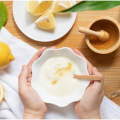Let’s be honest. Combination skin can feel like a full-time job. One minute your T-zone is shining like a polished apple, and the next, your cheeks feel tight, maybe even a little flaky. It’s a tale of two faces, and trying to find a skincare routine that addresses both extremes? Well, that’s the real challenge.
That’s where skin cycling comes in. This trendy-but-sensible approach isn’t a one-size-fits-all gimmick. It’s a strategic rhythm for your skin. Think of it like a workout plan for your face—some days you push hard (exfoliation), other days you focus on repair (recovery), and you always, always need rest days. For combination skin, this structured cadence is nothing short of revolutionary.
What Exactly is Skin Cycling? The Simple Breakdown
Popularized by dermatologist Dr. Whitney Bowe, skin cycling is a 4-night rotational routine designed to maximize product benefits while minimizing irritation. You cycle through active ingredients, giving your skin time to recover in between. It prevents that classic combo-skin mistake: over-treating the oily parts while neglecting the dry ones.
The standard cycle looks like this:
- Night 1: Exfoliate. You’re sloughing off dead skin cells.
- Night 2: Retinol. You’re encouraging cell turnover and tackling fine lines.
- Nights 3 & 4: Recovery. You’re focusing on barrier repair and hydration.
Then you repeat. It’s that simple. The magic lies in the rest period. It’s the key that unlocks the glow without the irritation.
Tailoring the Cycle for Your Combination Skin
You can’t just follow any generic plan. Your unique skin demands a customized approach. The goal is to balance—not overwhelm. Here’s how to adapt each phase.
Night 1: The Exfoliation Evening
This is where you clear out the gunk from your pores and smooth texture. But with combination skin, you have to be smart about it.
Avoid harsh physical scrubs. They can be too abrasive for drier cheeks. Instead, opt for chemical exfoliants like:
- AHAs (like Glycolic or Lactic Acid): Great for overall brightness and surface-level dryness.
- BHAs (like Salicylic Acid): A superstar for the oily T-zone as it cuts through oil and unclogs pores.
Honestly, a BHA-focused product might be your best bet. You can even apply it strategically, focusing on the forehead, nose, and chin if your cheeks are particularly sensitive.
Night 2: The Retinol Night
Retinol is a powerhouse, but it can be drying. The trick is to buffer it. After cleansing and toning, apply a light, hydrating serum or even a thin layer of moisturizer to your entire face. Wait a few minutes for it to absorb, then apply your retinol.
This creates a gentle barrier, slowing the absorption just enough to prevent irritation on your drier patches without sacrificing efficacy on your T-zone. Start with a low concentration—maybe 0.25% or 0.3%—and see how your skin responds. You know, baby steps.
Nights 3 & 4: The Recovery Phase (The Unsung Hero)
This is non-negotiable. These two nights are when your skin actually heals and strengthens. Skip this, and you’re asking for a compromised, angry barrier. The name of the game here is hydration and repair.
Load up on ingredients like:
- Ceramides: The building blocks of your skin’s barrier.
- Niacinamide: A true multi-tasker that calms redness, regulates oil, and improves texture.
- Peptides: They support skin elasticity and repair.
- Hyaluronic Acid: A hydration magnet, but always apply to damp skin and seal it in with a moisturizer.
On these nights, a slightly richer moisturizer on your cheeks is totally fine, even if you use a lighter gel-cream on your T-zone. It’s all about that targeted care.
A Sample 4-Night Combination Skin Cycle
| Night | Step | Product Suggestions & Tips |
| 1 (Exfoliate) | Gentle Cleanser, BHA Toner or Serum, Lightweight Moisturizer | Look for a 2% BHA liquid. Avoid other actives this night. |
| 2 (Retinol) | Gentle Cleanser, Hydrating Toner, Buffer Moisturizer (optional), Retinol Serum, Moisturizer | Start with a low-dose retinol. Apply the buffer to dry areas first if needed. |
| 3 (Recovery) | Gentle Cleanser, Hydrating Serum (e.g., Niacinamide + Peptides), Rich Moisturizer | Focus on barrier-repairing ingredients. Don’t be afraid of a slightly heavier cream on cheeks. |
| 4 (Recovery) | Gentle Cleanser, Hydrating Serum, Facial Oil (optional), Moisturizer | This is your “slugging” night if you like—a thin layer of an occlusive like petroleum jelly on dry spots only. |
Pro Tips for Navigating the Journey
Listen, your skin will talk to you. You just have to learn its language. If your cheeks are stinging, pull back on the actives and extend your recovery night. If your T-zone is still an oil slick, a niacinamide serum can become your daily best friend, even on recovery nights.
And the most important step of all, every single morning? Sunscreen. Actives make your skin more photosensitive. A broad-spectrum SPF 30 or higher is not a suggestion; it’s a requirement. It’s the final, non-negotiable seal on all your hard work.
The Final Word: It’s About Rhythm, Not Rigidity
Skin cycling for combination skin isn’t about finding a perfect, unchangeable routine. It’s about learning the rhythm of your own complexion. It’s a flexible framework that empowers you to respond to your skin’s daily needs instead of fighting against its inherent nature.
The real transformation begins when you stop battling the oil and the dryness separately and start working with the unique, dynamic canvas you have. Give it a cycle. Your balanced, glowing skin is waiting just on the other side of a little consistency.







